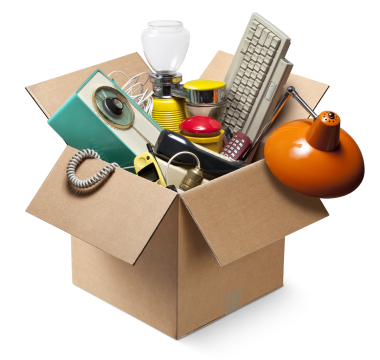With all the attention turned to packaging in recent weeks, it’s easy to forget that the wheels are also turning for WEEE (waste electrical and electronic equipment).
But with the release of the government’s consultation on WEEE expected later this year, this is the time to think about what we hope to achieve through an update to the WEEE regulations. Local authority collections and HWRCs lie at the heart of the system, so it is important that councils make their voice heard.
Since the first regulations were introduced in 2007, recycling infrastructure has come a long way. Take-back systems and local authority collections for large, bulky WEEE are well-established and approved authorised treatment facilities (AATFs) can be found around the UK. However, small and mixed WEEE can be difficult to capture, and these items often find their way into the residual waste stream.
According to the Global E-waste monitor, the UK ranks second in the world for the amount of e-waste produced every year, so if we are to reduce the impact of WEEE, the first step is to collect more of this material for proper disposal. When the government announced its decision to consult on improvements to the WEEE system in 2023, its reasoning was to “make it easier for people to properly dispose of their electrical waste including ensuring provision of adequately funded communications to consumers”.
Greater emphasis on producer takeback is likely to feature extensively. The consultation is likely to extend the role of producers, and change the regulations around takeback, both in store and for online deliveries, aimed at making it easier for the consumer to recycle their WEEE. There will also be a focus on kerbside WEEE collections, again focusing on convenience for the consumer.

While some local authorities have already added small WEEE to their recycling rounds, it’s unlikely that kerbside collections will be mandatory for councils; the onus is largely on producers to provide solutions and to fund systems that will encourage greater recycling and reuse. Whichever route becomes the norm, producers and waste managers – as well as members of the public – will need to agree on the details of what constitutes a successful collection network.
With better collection systems in place, we would hope to see a major shift in recycling levels. As well as generating greater volumes for recycling, sourcing WEEE directly from consumers is expected to result in higher-quality material with greater potential for reuse. Local authorities would need to consider the implications of these changes to material flows and quality and respond accordingly.
In line with the principles of the waste hierarchy, reuse will also be a key component of the consultation. For local authorities, this can present challenges, particularly around POPs (persistent organic pollutants). The recent inclusion of domestic seating such as sofas has thrown up issues relating to shredding and treatment, and many councils are turning to dedicated on-site reuse operations to manage EEE products rather than accepting WEEE as waste destined for reuse.
This feeds into design for recycling. With eco-modulation and design included in the consultation, we may see a knock-on effect for waste streams as coherent design for circular systems trickles through.
A new reporting category for vapes will lead to a separate vape recycling target that aims to ensure that vape producers pay for the collection and recycling of a difficult to recycle stream. Under the current system, making changes to reporting categories is difficult and time-consuming. The future regulations should make it more straightforward to account for new products, technology and WEEE streams.
The consultation offers a rare opportunity to shape the future. The decisions we make now will affect the impact of waste electricals, and help to ensure that the new system provides the best chance for effective change.


